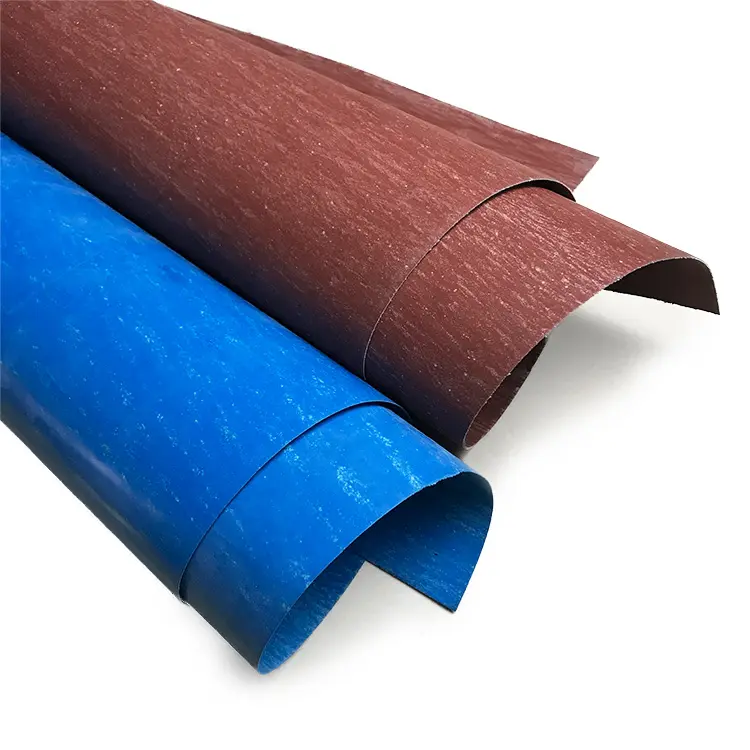Technical White Paper
Author: Composite Materials Technical Specialist (10+ years)
 Abstract
Abstract
This paper evaluates the health and regulatory issues surrounding asbestos gasket sheet products by combining controlled laboratory simulations with review of public scientific and regulatory data. Results indicate that airborne chrysotile fiber release is strongly dependent on operational conditions and control measures. Under standardized installation, maintenance and containment practices, measured fiber concentrations are well below common occupational limits. The paper examines how national resource endowments and industrial policies have influenced regulatory approaches and argues that a risk-based management framework is more consistent with the scientific evidence for industrial gasket applications than a blanket prohibition.
1. Background and Problem Statement
Asbestos gasket sheets—typically chrysotile fiber bound with organic or inorganic binders—have been used in the petroleum, chemical and marine sectors for decades because of their high temperature resistance (service temperatures up to ~550 °C), chemical compatibility and reliable sealing characteristics. From the late 20th century onward, many jurisdictions introduced strict controls or bans: the EU moved to a comprehensive prohibition in 2005, and major U.S. rule-making has effectively removed many commercial asbestos products from the market.
Two tensions frame the debate: (1) public health organizations (WHO, ILO) link asbestos-related disease primarily to long-term, unprotected, high-concentration exposures; (2) policy responses vary widely—some jurisdictions pursue zero-tolerance bans while others control exposure and permit regulated industrial use. This analysis asks whether the hazard associated with asbestos gasket sheet is intrinsic to the material in all uses, or whether risk is conditional and manageable with engineering and procedural controls.
2. Methods
This study integrates (A) internal simulation tests performed to ISO 15011-4 and (B) a targeted review of public regulatory and scientific documents (occupational exposure limits, regulatory actions, and resource data).
2.1 Internal Simulation Tests (ISO 15011-4)
Test specimens: three commercial asbestos gasket sheet types (thickness: 1.5 mm, 3.0 mm, 5.0 mm).
Scenarios:
Normal installation (torque-controlled assembly, sealed joints).
Maintenance disassembly (with N95 respirator and local containment).
Abnormal mechanical processing (cutting/grinding without PPE).
Metric: airborne fiber concentration (fibers per cubic centimeter, f/cc) measured by phase contrast microscopy (PCM) per NIOSH 7400.
Laboratory note: tests conducted in 2025 in an ISO 15011-4 compliant laboratory.
2.2 Regulatory and Literature Review
Occupational exposure databases and WHO/ILO position statements
Historical regulatory actions in EU and U.S.
Mineral resource reports and national production data
Comparative assessments of sealing material performance and lifecycle cost
3. Results & Interpretation
3.1 Internal Test Summary: Exposure Is Operationally Controllable
| Test Scenario | Airborne Fiber Concentration (f/cc) | OSHA PEL (8-hr TWA) | Compliance |
|---|---|---|---|
| Normal installation (torque-controlled) | < 0.01 | 0.1 | Compliant |
| Maintenance disassembly (with N95 + local controls) | 0.03 – 0.05 | 0.1 | Compliant |
| Mechanical cutting (unprotected) | 0.8 – 1.2 | 0.1 | Non-compliant |
Interpretation: Under controlled, standardized operations (proper tools, torque control, sealed interfaces and routine PPE), measured fiber release from asbestos gasket sheets was substantially below the common occupational limit of 0.1 f/cc. Unprotected mechanical processing generates elevated concentrations and therefore requires engineering controls and PPE to eliminate risk.
Practical implication: For routine installation and maintenance of flange seals, simple administrative and engineering measures (proper assembly procedure, limited mechanical disturbance, respiratory protection during maintenance where applicable) are sufficient to keep airborne fibers well below occupational limits.
3.2 Policy Context and Resource Correlation
A cross-jurisdictional review shows divergent regulatory approaches that correlate with national resource endowments and industrial policy priorities. Some jurisdictions with no domestic asbestos production have adopted prohibitions and concurrently promote substitute industries; producer countries commonly rely on exposure-control frameworks rather than outright bans. This observation is presented as contextual analysis rather than causal proof.
3.3 Alternatives: Performance and Cost Considerations
| Material | Heat Resistance | Chemical Resistance | Indicative Cost (USD/kg) | Typical Service Life (months) |
|---|---|---|---|---|
| Chrysotile asbestos gasket | ~550 °C | Excellent | 25–35 | 24–36 |
| Glass fiber gasket | ~300 °C | Good | 50–70 | 12–18 |
| Carbon fiber / high-end composites | ~400 °C (oxidative limit) | Excellent | 200–300 | 18–24 |
Interpretation: In high temperature (>300 °C) or highly corrosive service, asbestos gaskets often present the most cost-effective solution. Substitutes may require more frequent replacement or higher material cost, affecting life-cycle economics.
 4. Engineering Conclusions (Data-Driven)
4. Engineering Conclusions (Data-Driven)
Hazard is conditional, not universally inherent. For industrial sealing uses where fiber is well bound and mechanical disturbance is limited, the principal exposure pathways are controllable through standard practices.
Uncontrolled processing is the dominant risk. Mechanical cutting/grinding without containment or PPE produces airborne concentrations that exceed occupational limits. These scenarios are preventable with appropriate controls.
Regulatory divergence reflects multiple factors. Resource availability, precautionary policy approaches and industrial strategy influence legal outcomes; risk science supports a measured, exposure-based approach for industrial gasket usage.
Risk-based management is feasible. For low-dust gasket products with documented binding performance, regulated use with monitoring and supplier verification provides a defensible balance between safety and operational need.
5. Recommendations for Procurement, Design and Operations
Procurement & Supplier Verification
Require ISO 15011-4 test reports demonstrating fiber release < 0.05 f/cc under normal installation conditions.
Request chrysotile content certificate (typical spec: ≥ 85% chrysotile) and fiber binding strength test (e.g., ≥ 2.5 MPa per ISO 22889 or equivalent).
Include life-cycle cost comparisons for candidate materials when specifying seals for high-temperature or continuous-service plants.
Operational Controls
Specify assembly procedures (torque tool use, sealed clamp sequencing) that minimize mechanical abrasion.
Mandate PPE and local exhaust/containment during maintenance that may disturb the gasket (N95 or higher respirator; HEPA-filtered vacuuming).
Prohibit on-site cutting/grinding of asbestos gaskets without full containment and air monitoring.
Monitoring & Verification
Deploy area fiber monitoring where maintenance work is performed (detection sensitivity ≤ 0.01 f/cc preferred).
Implement periodic supplier audits and random sampling for fiber release testing.
Institute a documented incident response and remediation procedure for any seam failures or unexpected releases.
6. Procurement Specification Language (Suggested Clauses)
Material compliance: “Asbestos gasket sheet shall comply with ISO 15011-4; laboratory test report is required showing fiber release concentration < 0.05 f/cc under normal installation.”
Composition & binding: “Supplier shall supply chrysotile content certificate (≥ 85%) and fiber binding strength report (≥ 2.5 MPa, per ISO 22889 or equivalent).”
Performance requirements: “Gasket shall meet heat resistance ≥ 500 °C and chemical resistance to 20% H₂SO₄; where alternative materials are proposed, submit a full life-cycle cost and replacement interval analysis.”
7. Limitations and Responsible Framing
This assessment is focused on industrial gasket applications (flange seals, static sealing). It does not address historical occupational exposures associated with mining, milling, demolition or other high-dust environments. Policy conclusions are analytical and do not substitute for legal or regulatory advice. When deploying asbestos-containing products, local regulation and corporate safety policy must take precedence.
8. Closing Statement (Keyword placement)
For industrial sealing uses where product formulation and operational controls are specified and verified, an asbestos gasket sheet can be managed safely within established occupational limits. A pragmatic, risk-based framework—grounded in measurement, supplier verification and operational controls—better serves worker safety and industrial reliability than categorical exclusion in all contexts.
 Hongwo Sealing Sheet
Hongwo Sealing Sheet

 Abstract
Abstract 4. Engineering Conclusions (Data-Driven)
4. Engineering Conclusions (Data-Driven)
Scan the QR Code to start a WhatsApp chat with us.